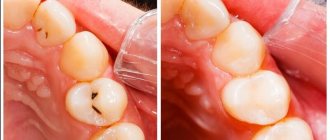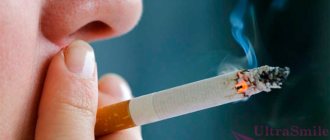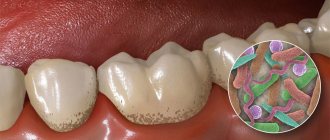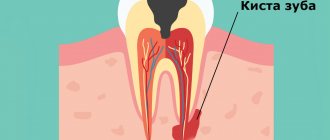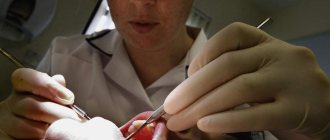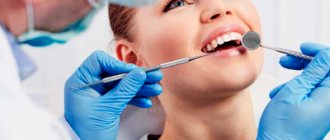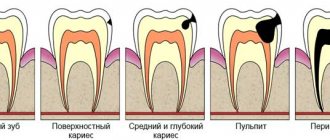From this article you will learn:
- Is it possible to cure caries without drilling with a drill,
- laser and ozone treatment in dentistry,
- the use of enzyme gels to remove caries.
Caries therapy in dentistry is a process that, before filling, requires the complete removal of hard tooth tissues affected by caries. Otherwise, caries will appear under the filling and will proceed unnoticed until pulpitis develops (inflammation of the nerve in the tooth). Removal of carious tissues is traditionally carried out using a drill and special abrasive burs, which seem to cut off the hard tissues of the tooth.
Drills make an unpleasant sound and make you wait for pain to occur, so alternative methods have been developed for patients with high anxiety that allow you to treat caries without a drill. In this case, a laser or a special enzyme gel can be used to remove carious tissue, and ozone can be used to disinfect tooth tissue. These methods make it possible to avoid unpleasant sound and vibration during treatment, and the use of a laser does not require local anesthesia.
Laser treatment of caries: photo
Devices for the treatment of caries without traditional drilling of the tooth with a drill appeared relatively long ago (about 15-20 years ago). However, most dental clinics still do not have these devices, and the demand for unusual treatment of caries without a drill has not become widespread. The reasons for this are quite simple: despite certain advantages, laser and ozone are still inferior to modern drills. And that's why…
Treatment of caries with laser –
Not long ago, a new line appeared in the price lists of some clinics - laser treatment of caries. It should be noted that dental lasers not only allow you to drill teeth painlessly, but they can also be used to perform many surgical operations in the oral cavity, as well as some diagnostic procedures. That is, laser systems are quite universal.
Using laser in dental treatment: advantages
- Painless manipulations - the use of a laser is absolutely painless (subject to safety precautions) and does not require injection of a local anesthetic for pain relief. For people who are terribly afraid of injections, this is a definite plus. There is also a group of patients with allergic reactions to many anesthetics, and therefore the use of a laser in this case also solves the problem of allergic reactions to anesthetic drugs.
- Comfortable treatment for children and adults - when using a laser, there are no characteristic sounds of a drill or vibration. Thus, the treatment becomes more comfortable and less unpleasant for the patient. In the video below you can see how comfortable it is to excise carious tissue using laser energy. Therefore, laser is a good choice not only for treating caries in adult patients who are terrified of the dentist, but also in children.
Laser removal of carious tissue: videos 1 and 2
Using laser in dental treatment: disadvantages
But laser treatment of caries also has obvious disadvantages. These shortcomings are not visible to the patient’s eye, but they cause many problems for the doctor during dental treatment, and ultimately affect the quality of treatment.
- It is impossible to completely abandon the use of a drill - the laser is excellent for removing caries-affected enamel. But to remove carious dentin, you will still have to use a drill in a small amount. True, to remove carious dentin, a dental handpiece and burs will be used, which do not make much noise. But a slight vibration will be felt (24stoma.ru).
- The high cost of treatment - which is associated both with the cost of a laser unit and the need for expensive training for dentists and their assistants, and with the fact that from a business point of view - all new products appearing on the market are always much more expensive. In any case, laser treatment is not a mass service, although there is a certain group of patients who purposefully look for clinics with the possibility of dental treatment without fear and anesthesia.
- There is a higher risk of fillings falling out - high laser power (which is mainly regulated only in the most expensive models) often leads to overheating of the hard tissues of the tooth, and as a result, to less good fixation of filling materials. Therefore, when choosing a clinic, it is better to ask the dentist whether the laser in their clinic has the ability to regulate the power (to reduce the risk of overheating of the hard tissues of the tooth).
- New equipment requires new skills - because... lasers are still just being introduced into dental clinics - this means inevitable mistakes doctors make in the process of gaining experience in using new equipment. In addition, safety precautions involve working in dark glasses, which impairs visual visibility and also contributes to a number of mistakes when processing dental tissue.
Advantages and disadvantages
The advantages of using laser treatment are:
- Painless. The patient does not feel discomfort or pain, since there is no direct contact. There is no heating of tissues, which allows treatment even at the deep stage of caries. In rare cases, the use of local anesthesia is indicated if the patient is too sensitive.
- Antiseptic effect. Light treatment destroys pathogenic bacteria on the surface, which eliminates the development of infectious lesions. This improves treatment efficiency, especially in root canal treatment.
- Non-contact technique. The principle of using laser processing eliminates the need for contact between the instrument and tissue. This reduces the risk of injury and ensures safety during therapy. Also, the non-contact method protects the wound from infection and makes the incision bloodless and clean. This eliminates the possibility of bleeding and associated complications.
- There are no such effects. The technology provides a targeted effect on the affected area without affecting the surrounding tissue. The peculiarity of the treatment also eliminates the occurrence of complications, the development of inflammatory processes, and severe pain after completion of treatment.
Flaws:
- the cost of treatment is high;
- the doctor must be highly qualified;
- It is necessary to strictly observe all the features of the treatment, the time of exposure of the affected area to the beam.
Treatment of caries with ozone –
Non-contact treatment of caries with ozone consists in the fact that tissues affected by caries are not removed mechanically (or their removal is minimized), but are disinfected using ozone molecules. The latter is triatomic oxygen, which is capable of destroying 99.99% of all cariogenic microorganisms in the carious cavity. You can see what a device for treating caries with ozone looks like in the video below.
The course of the procedure for treating caries with ozone - first, a silicone cap specially provided by the manufacturer is applied to the tooth (Fig. 5-7), from under which air is pumped out and something close to a vacuum is created. Then ozone is supplied to the cap, which acts on the microflora, killing 99.9% of all pathogenic bacteria. Within 20-30 seconds, all cariogenic microorganisms die.
- The advantages of treating caries with ozone are that you can treat teeth without a drill (but only very small carious defects), in other cases you will still have to drill, which means you will have to do anesthesia. That's basically it.
- Disadvantages of dental treatment with ozone: in 99% of cases, teeth will still have to be drilled.
If you do not drill, a large amount of tissue may remain inside and outside the tooth, which is relatively softened and cannot bear the full load. Imagine that you are placing a permanent filling on demineralized soft dentin or enamel (and it is hard). As a result, when teeth are closed and when chewing hard food, the load placed on the filling will be transferred to the surrounding tissues (enamel and dentin), which are softened and cannot withstand such a load. There will be pressure, the filling will fall out... As a result, the tooth will have to be treated again.
Conclusions: the use of such devices is advisable only in pediatric practice, when it is not possible to use a drill. In this case, the softened dentin and enamel are first scraped out with curettage spoons, but before this, it is optimal to apply a special enzyme gel into the carious cavity, which dissolves the carious tissue. And only after this the remaining tooth tissue is disinfected with ozone and a filling is placed. How enzyme gels work – read below.
Indications and contraindications
Laser dental treatment in St. Petersburg is indicated in the following cases:
- safe elimination of affected areas, the possibility of effective treatment of the carisogenic process;
- eliminating bleeding gums;
- elimination of bad breath, antibacterial treatment;
- treatment of periodontitis, pulpitis, root canal treatment;
- removal of tumors;
- strengthening tissues, creating local immunity;
- whitening, tartar removal;
- relieving enamel hypersensitivity;
- preparation before implantation;
- treatment of cystic formations.
Light therapy is safe and effective, but it may not always be used. Contraindications include:
- diseases of the cardiovascular system;
- lung diseases;
- infectious lesions of the respiratory system;
- pathologies of the endocrine system;
- bleeding disorders;
- mental disorders, nervous system functioning;
- too high enamel sensitivity;
- condition after surgery.
The use of laser treatment is allowed for children, pregnant women, and elderly patients. The therapy is safe and does not involve traumatic contact with tissues.
Application of enzyme gel –
Instead of a drill, special enzyme gels can be used to remove caries, which dissolve only the tissues affected by caries, without touching the healthy hard tissues of the tooth. This is an excellent tool for use especially in children's practice. There are a large number of manufacturers of such products, and one of the options is BRIX 3000 enzyme gel, the principle of operation of which you can see in the videos below.
The enzyme gel is introduced into the carious cavity for about 2 minutes, after which the softened carious tissues are scraped out of the carious cavity using a special tool. After this, the cavity is washed out and filling of the tooth can begin. True, in some cases it may be necessary to use a drill to smooth out the edges of the tooth enamel hanging over the carious cavity.
Application of enzyme gel –
Materials and methods
A study of the clinical effectiveness of products with desensitizing properties was conducted in 60 people aged 30 to 50 years (men and women) with chronic generalized periodontitis of moderate and severe severity, after professional dental hygiene using the PIEZON-MASTER 400 ultrasonic device. All patients had severe gum recession - from 2.5 to 3 mm. Individuals who were not exposed to occupational hazards and without significant severe concomitant somatic pathology were selected for research.
All patients were equally distributed into three groups, depending on the drug used. The first group included 20 people. In order to reduce the increased sensitivity of teeth in this group, a desensitizer (Gluma Desensitaizer from Heraeus Kulzer, Germany) was used, which was applied to the cervical sensitive area. This product was used in accordance with the attached instructions.
The second group of patients included 20 patients in whom hypersensitivity was removed using a Picasso Lite diode laser with a wavelength of 810 nm. The procedure was carried out with a replaceable uninitiated optical fiber at a power of 0.5 W for 1 minute using the contact-labile technique. Treatment was carried out in 3 visits with an interval of 1-2 days (Fig. 1).
Rice. 1. Treatment of the sensitive area of the tooth 3.3 with a diode laser
The third group included 20 people who had a desensitizer (Gluma Desensitaizer by Heraeus Kulzer, Germany) applied to the sensitive cervical area of the tooth (Fig. 2), after which laser irradiation was performed with a Picasso Lite diode laser on an uninitiated optical fiber (power 0.5 W) for 1 minute using a point (distant-labile) technique (Fig. 3). Treatment was carried out in 3 visits with an interval of 1-2 days.
Rice. 2. Applying a desensitizer before the laser procedure
Rice. 3. Scheme of the effect of fiber optics on the sensitive area of the tooth
During the clinical examination, probing was used, in which special attention was paid to the disruption of the structure of hard dental tissues and changes in periodontal tissues. To assess the temperature sensitivity of hard dental tissues, treatment with a water and air jet from a dental plaster was used. Patients were asked to rate on a scale of one to ten the pain caused by exposure of each tooth to a 5-second air flow at a distance of 2.5 cm from the enamel-cement junction of the sensitive tooth. The severity of hyperesthesia of hard dental tissues was assessed before and after treatment at various times (3 days, after 1, 2, 3, 4 weeks), which made it possible to characterize the intensity of tooth sensitivity before treatment and analyze the clinical effectiveness of the use of recommended products.
Statistical processing of the obtained results was carried out on a personal computer using the universal software package “Excel” and “Statistica v.6” using generally accepted parametric and nonparametric methods. Processing of variation series included calculation of arithmetic means (M), standard error (m), and standard deviation (σ). The frequency of features is presented with the standard error for qualitative features and the standard deviation for quantitative features. Student's t-test was used to compare mean values of quantitative variables. Differences between groups were considered significant if the error probability was less than 5% (p <0.05).
How is the treatment carried out?
If a person is concerned about the signs of caries, the first thing to do is make an appointment with a dentist. At the initial appointment, the doctor performs an examination and makes recommendations. If the patient decides to undergo therapy, then a caries treatment regimen is determined.
Laser therapy has contraindications, so the dentist must make sure that the patient does not have them during the interview. Additional diagnostics are prescribed at the discretion of the doctor. If limitations to the use of the laser are identified, the dentist selects alternative methods.
At the A-Medic clinic, dental caries treatment is carried out according to the following scheme:
- use of local anesthetic (for hypersensitivity or deep carious lesions);
- cleaning the enamel from plaque and removing softened crown tissues (using sandblasting or ultrasound);
- Preparation of the laser installation (adjusting the power of laser beams, selecting attachments).
The laser beam acts in a directional manner, so it does not affect healthy tissue. After the area affected by caries has been treated, the crown is treated with a special compound. The procedure is completed by installing a filling and giving the tooth an aesthetic appearance by grinding.
What do we offer
Dentistry Mane Clinic offers the services of highly qualified dentists who can quickly and efficiently cure any stage of caries. With us you can undergo complete treatment of cervical caries without any complications.
The cost of treatment must be clarified in advance with the administrator and the doctor - for the treatment of cervical caries the price is presented in a different range. The choice of treatment method depends on the location of carious lesions, the accessibility of the source of inflammation, and the financial capabilities of the patient.
Our dentists will do everything possible to ensure that you leave us with a beautiful and healthy smile!
Possibilities of laser dentistry
Laser dentistry is relevant for:
- teeth whitening,
- removal of soft tissues,
- root canal sterilization,
- installation of braces,
- opening of implants,
- treatment of inflammatory diseases, periodontitis.
Modern techniques are actively used in the elimination of caries, in orthodontics, orthopedics, and surgery.
Lasers also play an important role in aesthetic dentistry. It allows you to whiten teeth, change the contour of the gums, and the shape of the tissue. Now everyone can have an attractive smile! The popularity of laser dentistry is explained by the fact that laser radiation can:
- reduce the permeability of vascular walls and reduce inflammatory reactions,
- improve microcirculation,
- increase local immunity,
- stimulate tissue regeneration and metabolism.
The possibilities of modern laser dentistry will allow you to forget about any discomfort and not be afraid of going to the doctor!
